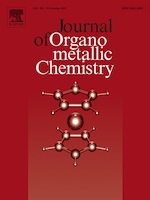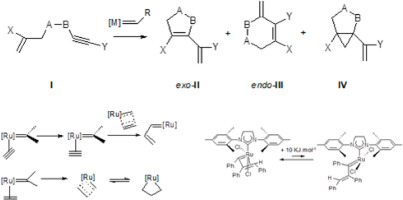"Mechanistic Aspects of the Ring-Closing Enyne Metathesis Catalyzed by Ruthenium-Alkylidene Complexes"
Carmen-Irena Mitan, Petru Filip, Lionel Delaude, and Valerian Dragutan
 |
source: Journal of Organometallic Chemistry
year: 2024
volume: 1014
article: 123190
pages: 20
doi: 10.1016/j.jorganchem.2024.123190
|

Abstract: Ring-closing enyne metathesis (RCEYM) is a powerful synthetic strategy to build complex molecular architectures, including carbocycles and heterocycles, which are crucial for natural product synthesis. In this review, we delve into the mechanistic nuances of RCEYM, with a focus on the role of the well-defined Grubbs and Hoveyda-Grubbs ruthenium-alkylidene catalysts. Notably, integrating computational and experimental findings, we highlight how the sophisticated interplay of catalytic and substrate variables orchestrate the RCEYM process thus dictating reaction pathways and selectivity.
Keywords: Alkene, Alkylidene; Alkyne; DFT; Grubbs Catalyst; Hoveyda-Grubbs Catalyst
[Full Text] [<< Previous Article] [Back to the List of Publications] [Next Article >>] l.delaude@ulg.ac.be